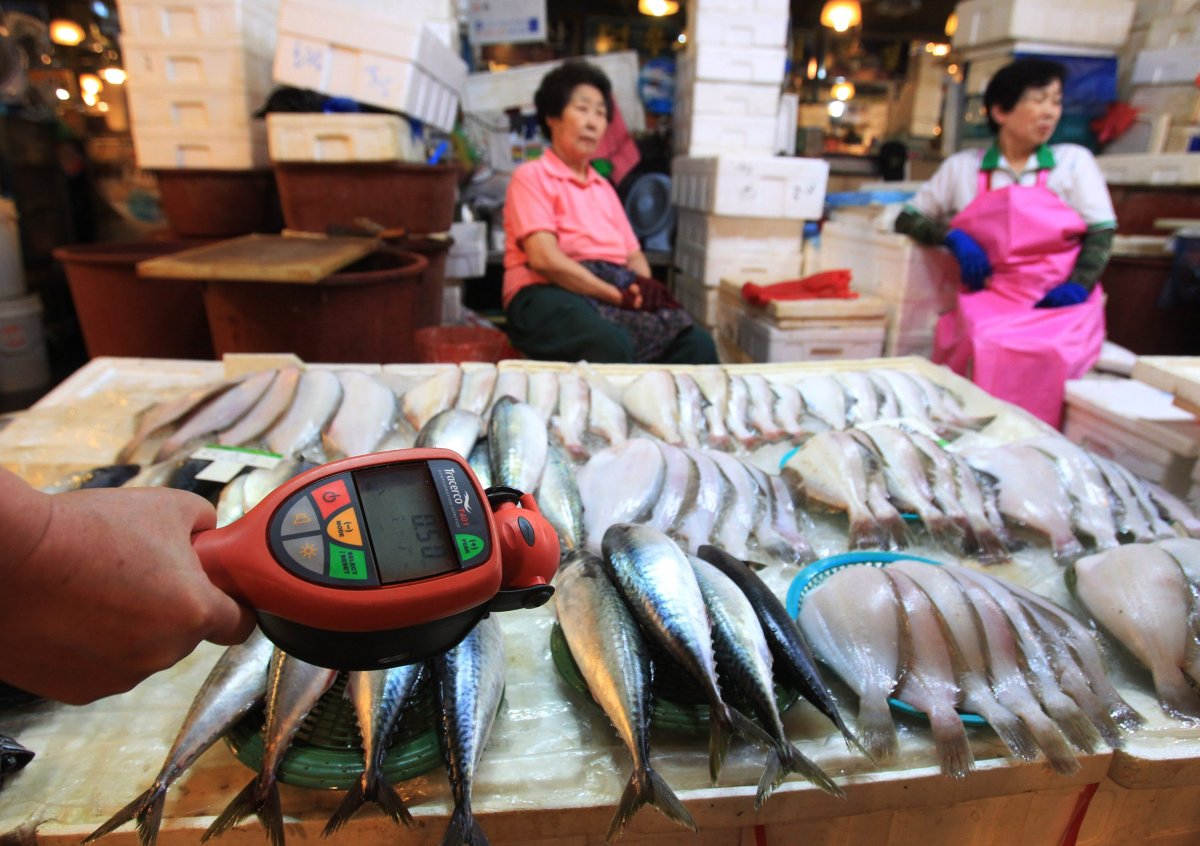A fish living near the Fukushima Daiichi nuclear plant that melted down in 2011 was found to contain astronomical levels of radioactive cesium, stoking fears about the Japanese government’s plan to release 1.3 million tonnes of treated wastewater from the plant in a matter of weeks.

The black rockfish contained 18,000 becquerels per kilogram of cesium-137 and was caught on May 18 in the inner breakwater of the plant’s port, the Guardian reported. Japan’s safety limit for radiation in food is 100 becquerels per kilogram, meaning the fish had a radioactive concentration 180 times over the legal limit.
In the past year, 44 fish with cesium levels above 100 becquerels per kilogram have been found in the Fukushima plant port. One specimen was an eel, found to have 1,700 becquerels per kilogram, and another was a rock trout, which measured at 1,200 becquerels per kilogram.
The fish were caught and tested by the operator of the Fukushima Daiichi nuclear plant, Tokyo Electric Power Company (TEPCO). The company has been testing fish off the plant’s port since the meltdown in March 2011, when a massive earthquake and tsunami destroyed the plant’s cooling system, causing three of its reactors to fail.
Water used to cool the reactor cores accumulated in about 1,000 tanks in the plant, and will reach their capacity by early 2024. Japanese officials say the water needs to be released to prevent accidental leaks in case of another disaster and to continue with the plant’s decommissioning.
The government plans to release the water over decades through an undersea tunnel, starting this summer, much to the dismay of neighbouring countries and local fishers.
When asked about concerns around the wastewater release plan, a TEPCO official told the Guardian that the “impact on the public and environment will be minuscule.”
According to the Associated Press, TEPCO attributes the high radioactivity in fish caught within the plant’s port to contaminated sediment from the initial nuclear meltdown, and continued run-off from rainwater that flows into the inner breakwater.
Cesium concentrations of the seafloor sediment found in the inner breakwater measures more than 100,000 becquerels per kilogram, TEPCO told the Guardian.
- Harvey Weinstein hospitalized after return to jail following rape conviction overturn
- California mom accidentally invites 487 people to child’s 1st birthday
- Canada is unblocking aid to Afghanistan but delay is ‘extremely frustrating’: advocate
- ‘Hiroshima-level casualties’ feared in final battle for North Darfur
The company added that it has periodically removed fish from the Fukushima plant port since 2012 to prevent fish from escaping the area. Regular monitoring of the fish was halted after nets were installed in January 2016 to keep fish inside, but started again in 2022 after a radioactive black rockfish was caught 50 kilometres up the coastline.
“When a black rockfish with radioactive concentrations that exceed regulatory standards was caught off the coast of Soma in January 2022, we began sampling again within this area in conjunction with the installation of more nets to prevent fish from leaving the port,” a TEPCO official told the Guardian.
In February 2022, shipments of black rockfish caught off Fukushima’s coast were suspended after radiation was detected in the catch. All seafood species caught in the area are regularly tested for radiation.
There is no official date for when the Fukushima Daiichi plant will start releasing wastewater into the Pacific, but the plan is expected to start within weeks.
Residents worry that the water discharge could deal another setback to Fukushima’s image and hurt their businesses and livelihoods.
“Without a healthy ocean, I cannot make a living,” said Yukinaga Suzuki, a 70-year-old innkeeper at Usuiso beach in Iwaki about 50 km south of the plant. He has requested that officials hold off on releasing the water until the swimming season is over.
“Releasing the water just as people are swimming at sea is totally out of line, even if there is no harm,” he said.
Government and TEPCO officials say the release plan is sound and consistent with international standards.
The International Atomic Energy Agency (IAEA) released its final report on the plan this month, and found the environmental and health impacts of the wastewater release would be negligible. IAEA Director General Rafael Grossi said radioactivity in the water would be almost undetectable and there is no cross-border impact.
Jason Donev, a professor of physics at the University of Calgary who specializes in nuclear energy, believes the water is safe for release.
He told Global News that much of the radioactivity in the water has decayed, and in addition, the water will go through a filtration system called the Advanced Liquid Processing System, or ALPS.
“It is basically a really, really good filtration system,” Donev said. “That water is now safe. It’s fine.”
Donev said that water from nuclear plants is dumped into bodies of water all the time around the world, so the practice isn’t new.
What concerns him, and other scientists, is that this water became contaminated abnormally due to the meltdown, and may contain dozens of low-dose radionuclides (radioactive molecules) that have not been studied as robustly. Though they are filtered to legally releasable levels and their environmental impact deemed minimal, they still require close scrutiny, experts say.
“If you ask their impact on the environment, honestly, we can only say we don’t know,” says University of Tokyo environmental chemistry professor Katsumi Shozugawa, referring to dozens of radionuclides whose leakage is not anticipated at normal reactors, he says.
“But it is true that the lower the concentration, the smaller the environmental impact,” and the plan is presumably safe, he said.
Japanese fishing organizations strongly opposed Fukushima’s water release, as they worry about further damage to the reputation of their seafood as they struggle to recover.
Groups in South Korea and China have also raised concerns, making it a political and diplomatic issue. Hong Kong has vowed to ban the import of aquatic products from Fukushima and other Japanese prefectures if Tokyo discharges treated radioactive wastewater into the sea.
China plans to step up import restrictions and Hong Kong restaurants began switching menus to exclude Japanese seafood.
Agricultural Minister Tetsuro Nomura acknowledged some fishery exports from Japan have been suspended at Chinese customs, and that Japan was urging Beijing to honour science.
— With files from Global News’ Eric Stober and The Associated Press










Comments